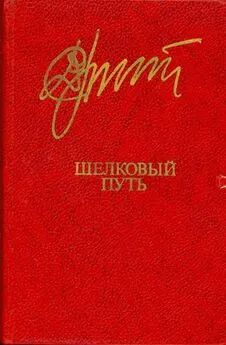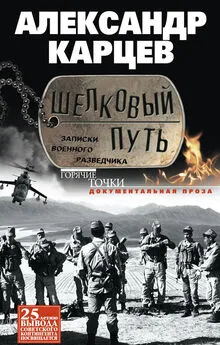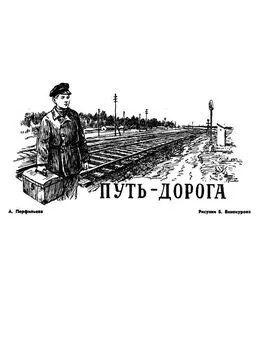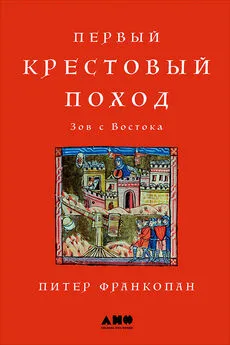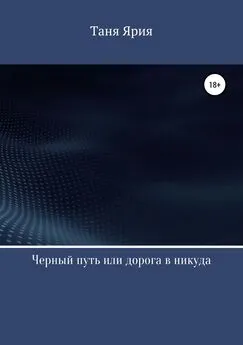Питер Франкопан - Шелковый путь. Дорога тканей, рабов, идей и религий
- Название:Шелковый путь. Дорога тканей, рабов, идей и религий
- Автор:
- Жанр:
- Издательство:Литагент 5 редакция
- Год:2017
- Город:Москва
- ISBN:978-5-699-95706-4
- Рейтинг:
- Избранное:Добавить в избранное
-
Отзывы:
-
Ваша оценка:
Питер Франкопан - Шелковый путь. Дорога тканей, рабов, идей и религий краткое содержание
Вы увидите, что история развивалась совсем не так, как мы привыкли изучать в школе. Так, столетия назад интеллектуальные центры мира, «Оксфорды» и «Кембриджи», «Гарварды» и «Йели», находились не в Европе, а в городах Средней Азии, куда и съезжалась вся просвещенная молодежь в поисках успеха.
Шелковый путь. Дорога тканей, рабов, идей и религий - читать онлайн бесплатно ознакомительный отрывок
Интервал:
Закладка:
1125
J. Glete, Navies and Nations: Warships, Navies and State Building in Europe and America, 1500–1860 , 2 vols (Stockholm, 1993), рр. 192–195.
1126
Witsen’s book, Aeloude en Hedendaegsche Scheeps-bouw en Bestier , работа опубликована в 1671 и стала самым большим трудом в его жизни. О копии Пеписа – N. Smith et al., Catalogue of the Pepys Library at Magdalene College, Cambridge , vol. 1 (1978), р. 193. Человек, который вел дневник, сыграл важную роль в создании больницы Христа, которая остается одной из ведущих школ Британии, E. Pearce, Annals of Christ’s Hospital (London, 1901), рр. 99–126; о новых проектах см. B. Lavery (ed.), Deane’s Doctrine of Naval Architecture, 1670 (London, 1981).
1127
D. Benjamin and A. Tifrea, ‘Learning by Dying: Combat Performance in the Age of Sail’, Journal of Economic History 67.4 (2007), рр. 968–1000.
1128
E. Lazear and S. Rosen, ‘Rank-Order Tournaments as Optimum Labor Contracts’, Journal of Political Economy 89.5 (1981), рр. 841–864; акже см. D. Benjamin and C. Thornberg, ‘Comment: Rules, Monitoring and Incentives in the Age of Sail’, Explorations in Economic History 44.2 (2003), рр. 195–211.
1129
J. Robertson, ‘The Caribbean Islands: British Trade, Settlement, and Colonization’, in L. Breen (ed.), Converging Worlds: Communities and Cultures in Colonial America (Abingdon, 2012), рр. 176–217.
1130
P. Stern, ‘Rethinking Institutional Transformation in the Making of Empire: The East India Company in Madras’, Journal of Colonialism and Colonial History 9.2 (2008), рр. 1–15.
1131
H. Bowen, The Business of Empire: The East India Company and Imperial Britain, 1756–1833 (Cambridge, 2006).
1132
H. Bingham, ‘Elihu Yale, Governor, Collector and Benefactor’, American Antiquarian Society. Proceedings 47 (1937), рр. 93–144; H. Bingham, Elihu Yale: The American Nabob of Queen Square (New York, 1939).
1133
J. Osterhammel, China und die Weltgesellschaft (1989), р. 112.
1134
См., например, F. Perkins, Leibniz and China: A Commerce of Light (Cambridge, 2004).
1135
Цитируеся по S. Mentz, The English Gentleman Merchant at Work: Madras and the City of London 1660–1740 (Copenhagen, 2005), р. 162.
1136
Procopius, The Wars , 8.20, 5, рр. 264–266.
1137
K. Matthews, ‘Britannus / Britto: Roman Ethnographies, Native Identities, Labels and Folk Devils’, in A. Leslie, Theoretical Roman Archaeology and Architecture: The Third Conference Proceedings (1999), р. 15.
1138
R. Fogel, ‘Economic Growth, Population Theory, and Physiology: The Bearing of Long-Term Processes on the Making of Economic Policy’, American Economic Review 84.3 (1994), рр. 369–395; J. Mokyr, ‘Why was the Industrial Revolution a European Phenomenon?’, Supreme Court Economic Review 10 (2003), рр. 27–63.
1139
J. de Vries, ‘Between Purchasing Power and the World of Goods: Understanding the Household Economy in Early Modern Europe’, in J. Brewer and R. Porter (eds), Consumption and the World of Goods (1993), рр. 85–132; J. de Vries, The Industrious Revolution ; H. – J. Voth, ‘Time and Work in Eighteenth-Century London’, Journal of Economic History 58 (1998), рр. 29–58.
1140
N. Voigtländer and H. – J. Voth, ‘Why England? Demographic Factors, Structural Change and Physical Capital Accumulation during the Industrial Revolution’, Journal of Economic Growth 11 (2006), рр. 319–361; L. Stone, ‘Social Mobility in England, 1500–1700’, Past & Present 33 (1966), рр. 16–55; также см. Р. Fichtner, Protestantism and Primogeniture in Early Modern Germany (London, 1989), для оценки связи между религией и первородством.
1141
K. Karaman and S. Pamuk, ‘Ottoman State Finances in European Perspective, 1500–1914’, Journal of Economic History 70.3 (2010), рр. 611–612.
1142
G. Ames, ‘The Role of Religion in the Transfer and Rise of Bombay’, Historical Journal 46.2 (2003), рр. 317–340.
1143
J. Flores, ‘The Sea and the World of the Mutasaddi: A Profile of Port Officials from Mughal Gujarat (c.1600–1650)’, Journal of the Royal Asiatic Society 3.21 (2011), рр. 55–71.
1144
Tūzuk-i-Jahāngīrī , tr. W. Thackston, The Jahangirnama: Memoirs of Jahangir, Emperor of India (Oxford, 1999), р. 108.
1145
A. Loomba, ‘Of Gifts, Ambassadors, and Copy-cats: Diplomacy, Exchange and Difference in Early Modern India’, in B. Charry and G. Shahani (eds), Emissaries in Early Modern Literature and Culture: Mediation, Transmission, Traffic, 1550–1700 (Aldershot, 2009), рр. 43–45 и также в других местах.
1146
Rev. E. Terry, A Voyage to East India (London, 1655), р. 397, цитируеся по T. Foster, The Embassy of Sir Thomas Roe to India (London, 1926), рр. 225–226, n. 1. Путешественник Питер Манди, когда посетил Сурат, увидел двух додо, которые также могли быть подарены торговцами, стремящимися завоевать благосклонность Джахангира, Travels of Peter Mundy , 2, р. 318.
1147
L. Blussé, Tribuut aan China. Vier eeuwen Nederlands – Chinese betrekkingen (Amsterdam, 1989), рр. 84–87.
1148
Список даров – J. Vogel (ed.), Journaal van Ketelaar’s hofreis naar den Groot Mogol te Lahore (The Hague, 1937), рр. 357–393; A. Topsfield, ‘Ketelaar’s Embassy and the Farengi Theme in the Art of Udaipur’, Oriental Art 30.4 (1985), рр. 350–367.
1149
Подробно о взвешивании см. Shah Jahan Nama , р. 28; Жан-де-Тевено, который путешествовал по Индии в семнадцатом веке, дает яркое описание церемонии взвешивания, S. Sen, Indian Travels of Thevenot and Careri (New Delhi, 1949), 26, рр. 66–67.
1150
Р. Mundy, Travels , рр. 298–300.
1151
N. Manucci, A Pepys of Mogul India, 1653–1708: Being an Abridged Edition of the ‘Storia do Mogor’ of Niccolao Manucci (New Delhi, 1991), рр. 197, 189.
1152
J. Gommans, ‘Mughal India and Central Asia in the Eighteenth Century: An Introduction to a Wider Perspective’, Itinerario 15.1 (1991), рр. 51–70. О выплате дани см. J. Spain, The Pathan Borderland (The Hague, 1963), рр. 32–34; а также см. C. Noelle, State and Tribe in Nineteenth-Century Afghanistan: The Reign of Amir Dost Muhamad Khan (1826–1863) (London, 1997), р. 164.
1153
S. Levi, ‘The Ferghana Valley at the Crossroads of World History: The Rise of Khoqand 1709–1822’, Journal of Global History 2 (2007), рр. 213–232.
1154
S. Levi, ‘India, Russia and the Eighteenth-Century Transformation of the Central Asian Caravan Trade’, Journal of the Economic and Social History of the Orient 42.4 (1999), рр. 519–548.
1155
См. I. McCabe, Shah’s Silk for Europe’s Silver: The Eurasian Trade of the Julfa Armenians in Safavid Iran and India, 1530–1750 (Atlanta, 1999, а также см. B. Bhattacharya, ‘Armenian European Relationship in India, 1500–1800: No Armenian Foundation for European Empire?’, Journal of the Economic and Social History of the Orient 48.2 (2005), рр. 277–322.
1156
S. Delgoda, ‘“Nabob, Historian and Orientalist”: Robert Orme: The Life and Career of an East India Company Servant (1728–1801)’, Journal of the Royal Asiatic Society 2.3 (1992), рр. 363–364.
1157
Цитируется по T. Nechtman, ‘A Jewel in the Crown? Indian Wealth in Domestic Britain in the Late Eighteenth Century’, Eighteenth-Century Studies 41.1 (2007), р. 73.
1158
A. Bewell, Romanticism and Colonial Disease (Baltimore, 1999), р. 13.
1159
T. Bowrey, Geographical Account of Countries around the Bay of Bengal 1669 to 1679 , ed. R Temple (London 1905), рр. 80–81.
1160
C. Smylitopoulos, ‘Rewritten and Reused: Imagining the Nabob through “Upstart Iconography”’, Eighteenth-Century Life 32.2 (2008), рр. 39–59.
1161
Р. Lawson, The East India Company: A History (London 1993), р. 120.
1162
Nechtman, ‘Indian Wealth in Domestic Britain’, р. 76.
1163
E. Burke, The Writings and Speeches of Edmund Burke , ed. W. Todd, 9 vols (Oxford, 2000), 5, р. 403.
1164
D. Forrest, Tea for the British: The Social and Economic History of a Famous Trade (London, 1973), Потребление чая в Великобритании – приложение II, таблица 1, стр. 284.
1165
О Бенгалии – R. Datta, Society, Economy and the Market: Commercialization in Rural Bengal, c. 1760–1800 (New Delhi, 2000); R. Harvey, Clive: The Life and Death of a British Emperor (London, 1998).
1166
Р. Marshall, East India Fortunes: The British in Bengal in the Eighteenth Century (Oxford, 1976), р. 179.
1167
J. McLane, Land and Local Kingship in Eighteenth-Century Bengal (Cambridge, 1993), рр. 194–207.
1168
См. N. Dirks, Scandal of Empire: India and the Creation of Imperial Britain (Cambridge, MA, 2006), рр. 15–17.
1169
Р. Lawson, The East India Company: A History (New York, 1993).
1170
J. Fichter, So Great a Proffit: How the East Indies Trade Transformed Anglo-American Capitalism (Cambridge, MA, 2010), рр. 7–30.
1171
Из писем жителей Бостона, которые в течение нескольких месяцев после этого жаловались, что «вкус рыбы изменился», они опасались, что чай, возможно, так загрязнил воду в гавани, что рыба могла заразиться, причиняя нервные расстройства человеку, Virginia Gazette , 5 May 1774.
Читать дальшеИнтервал:
Закладка:


